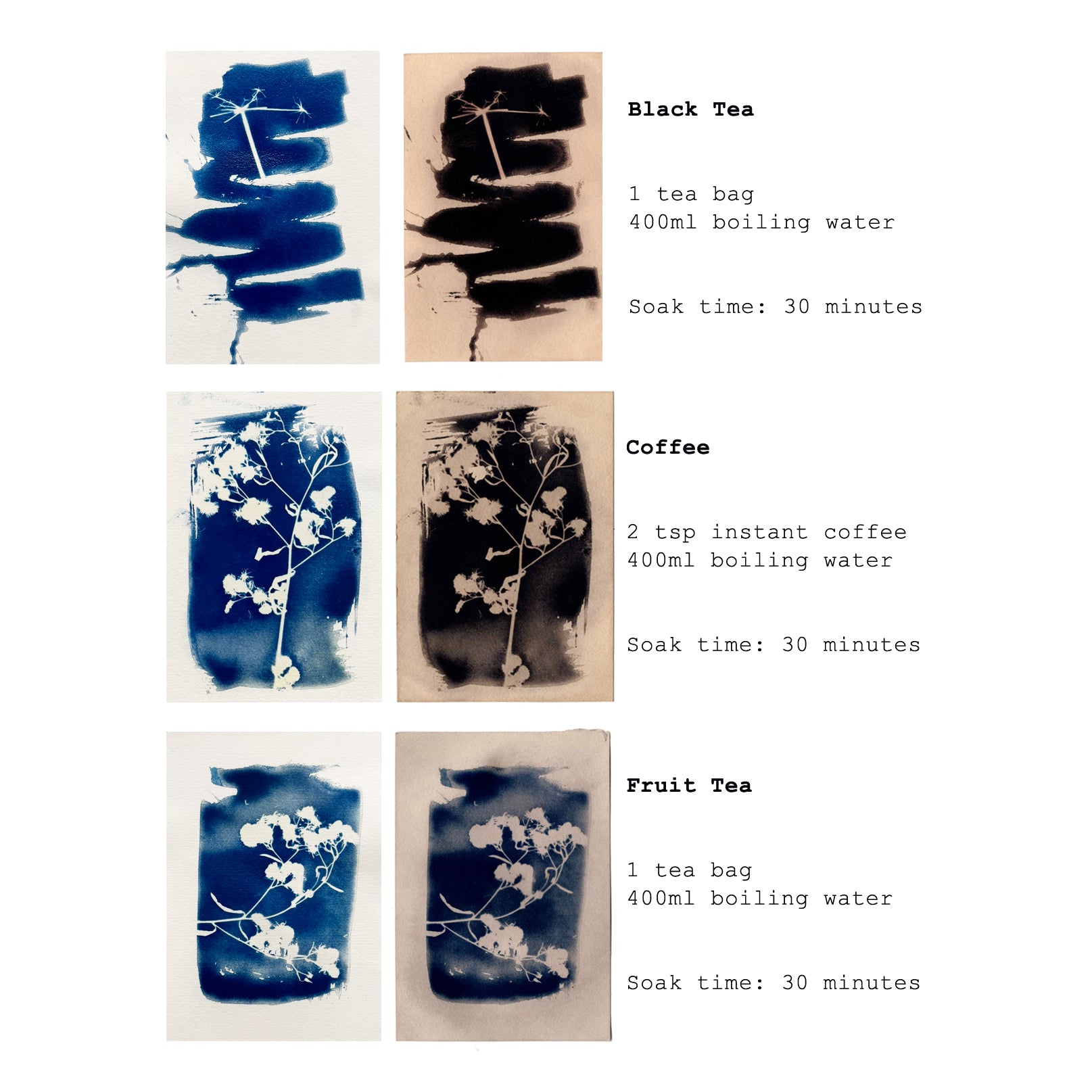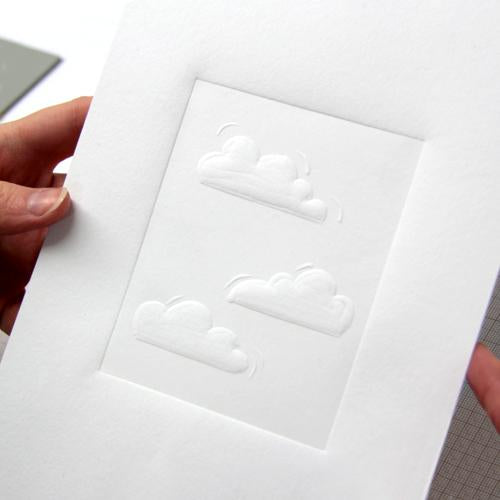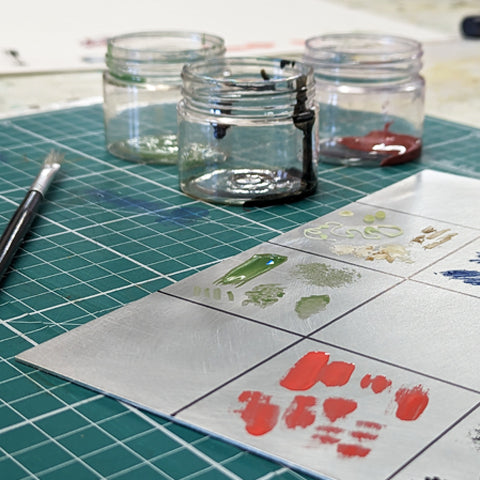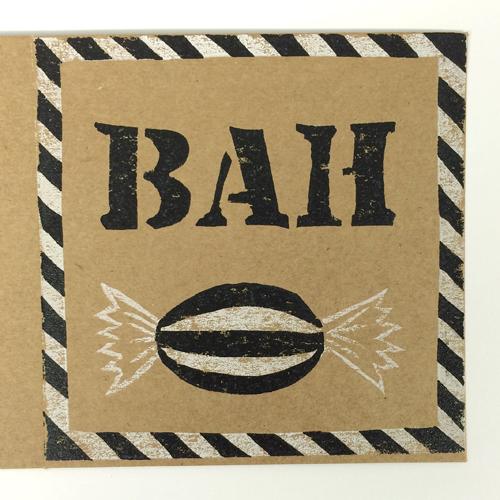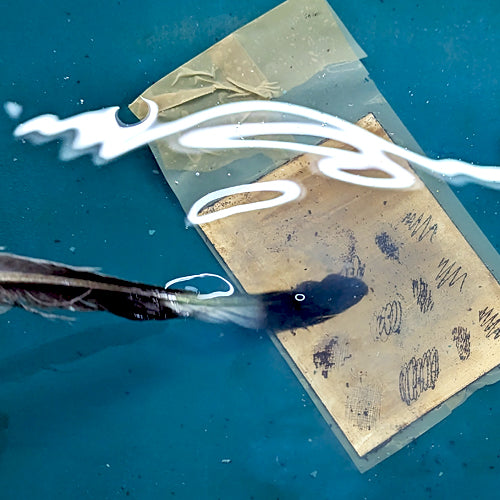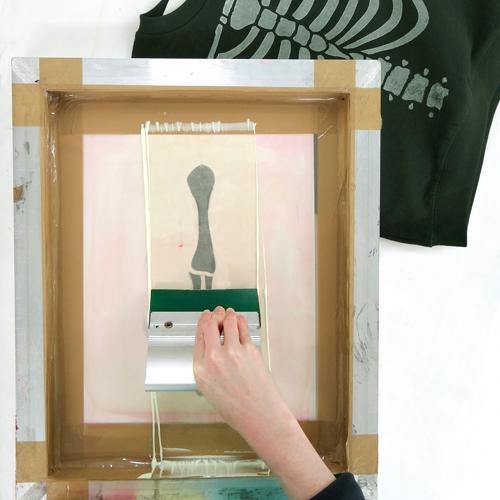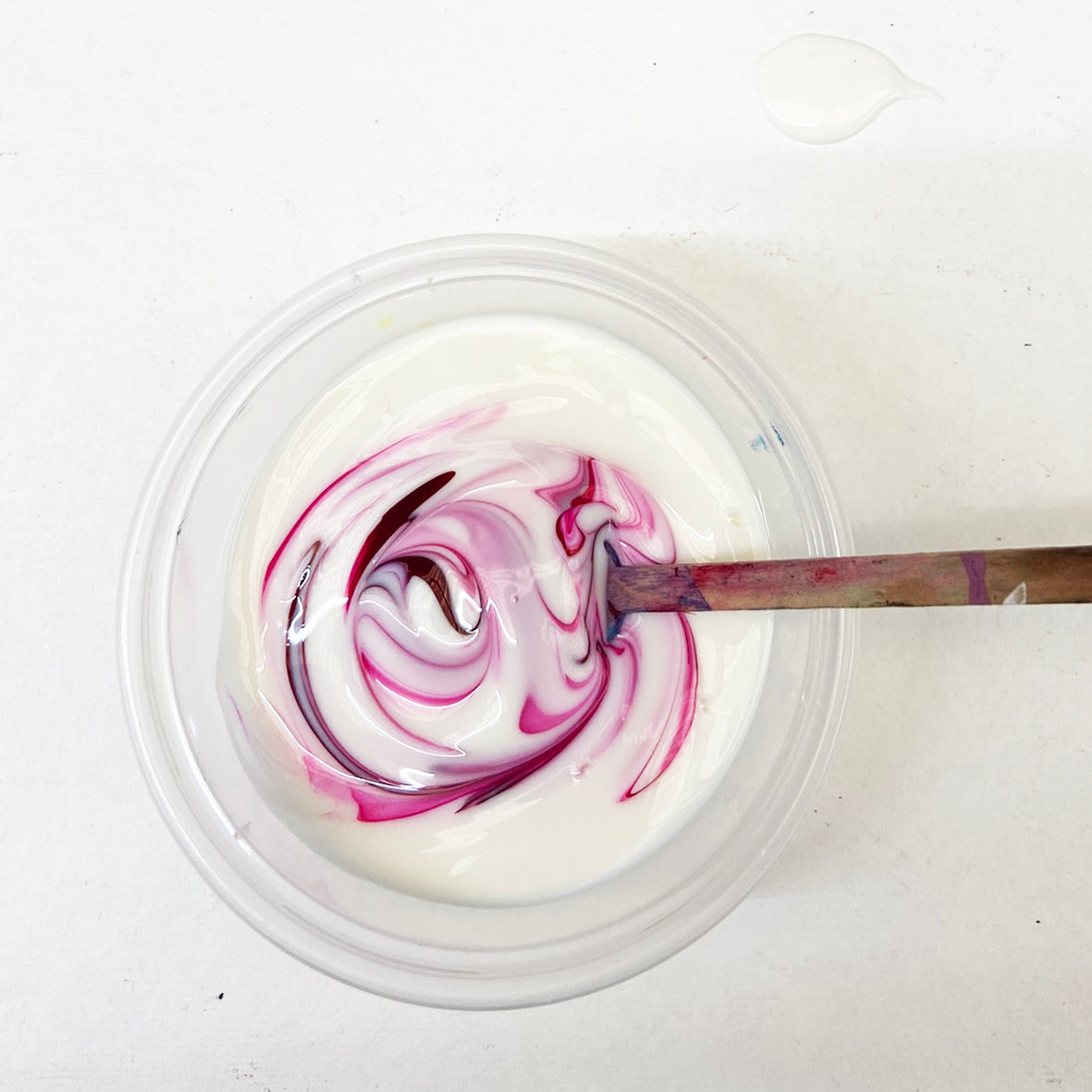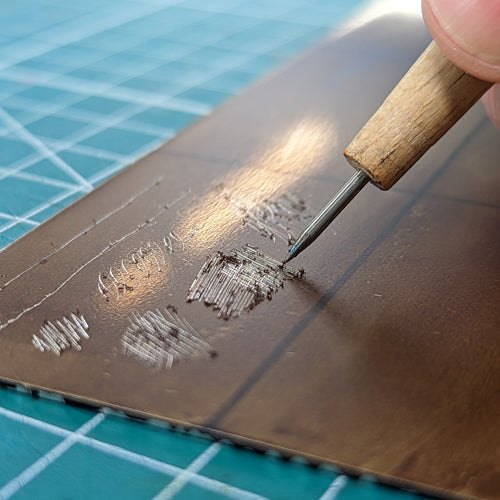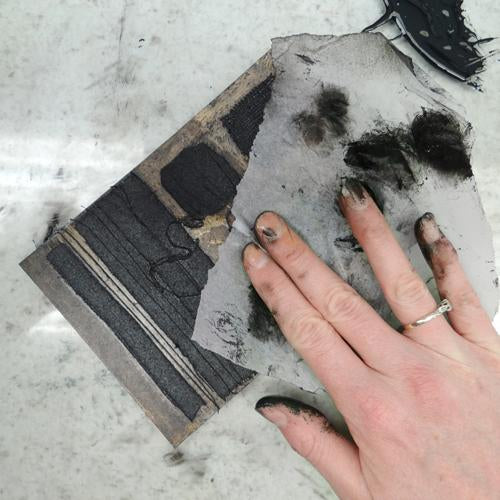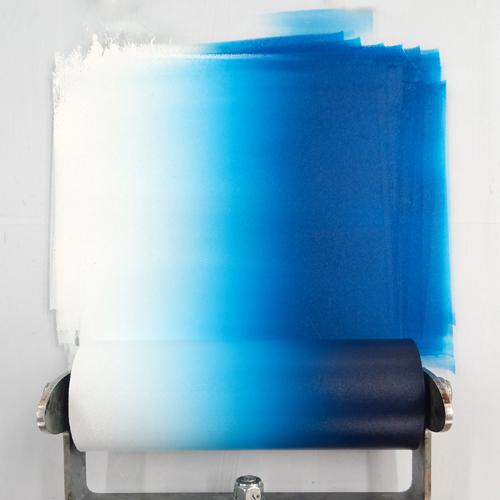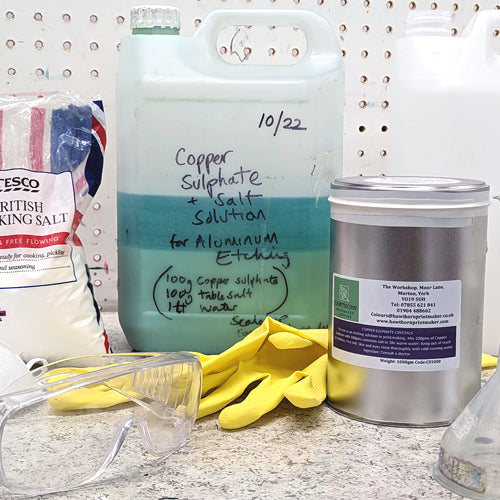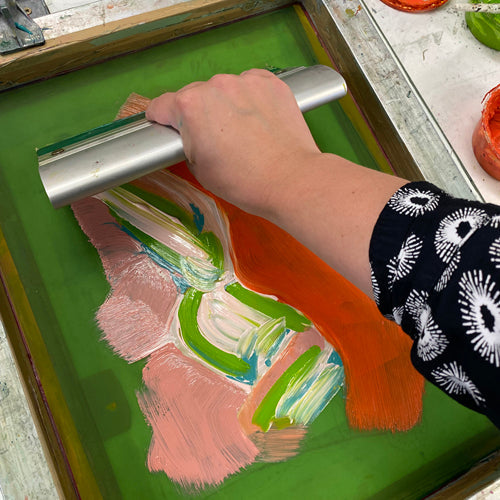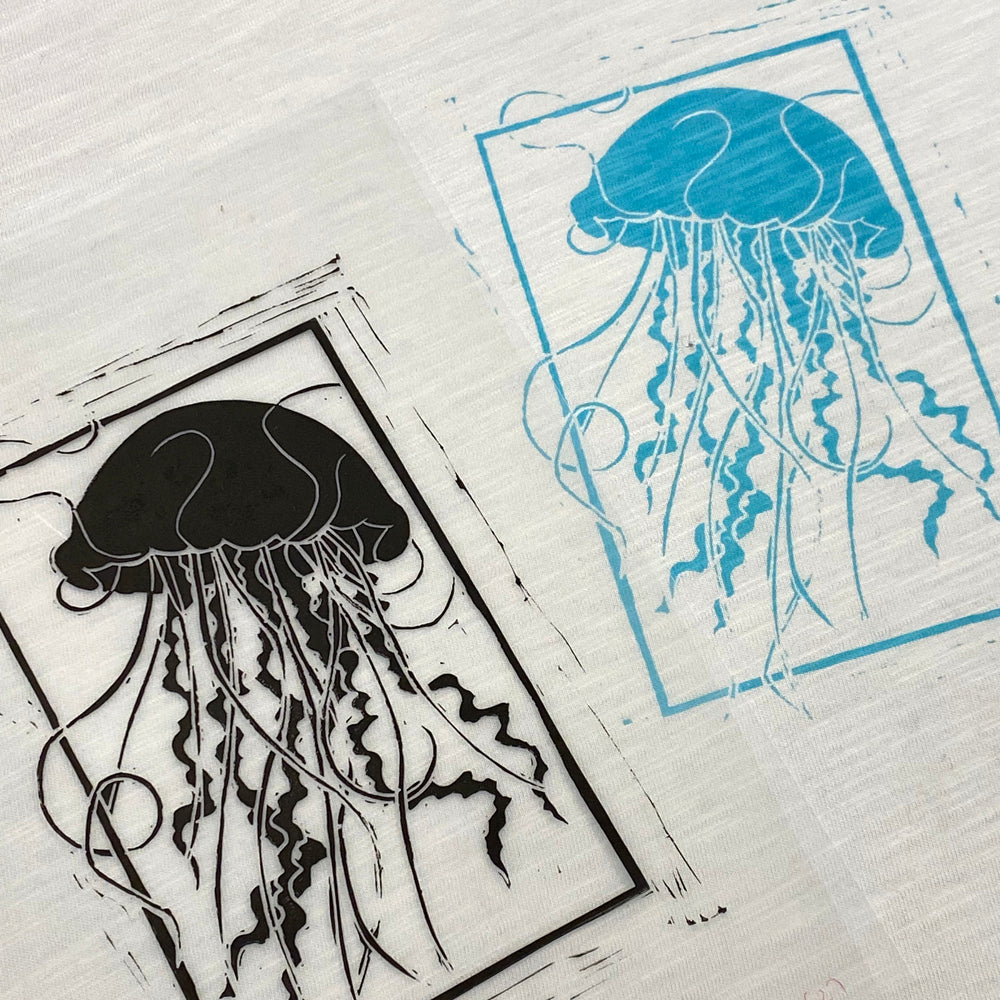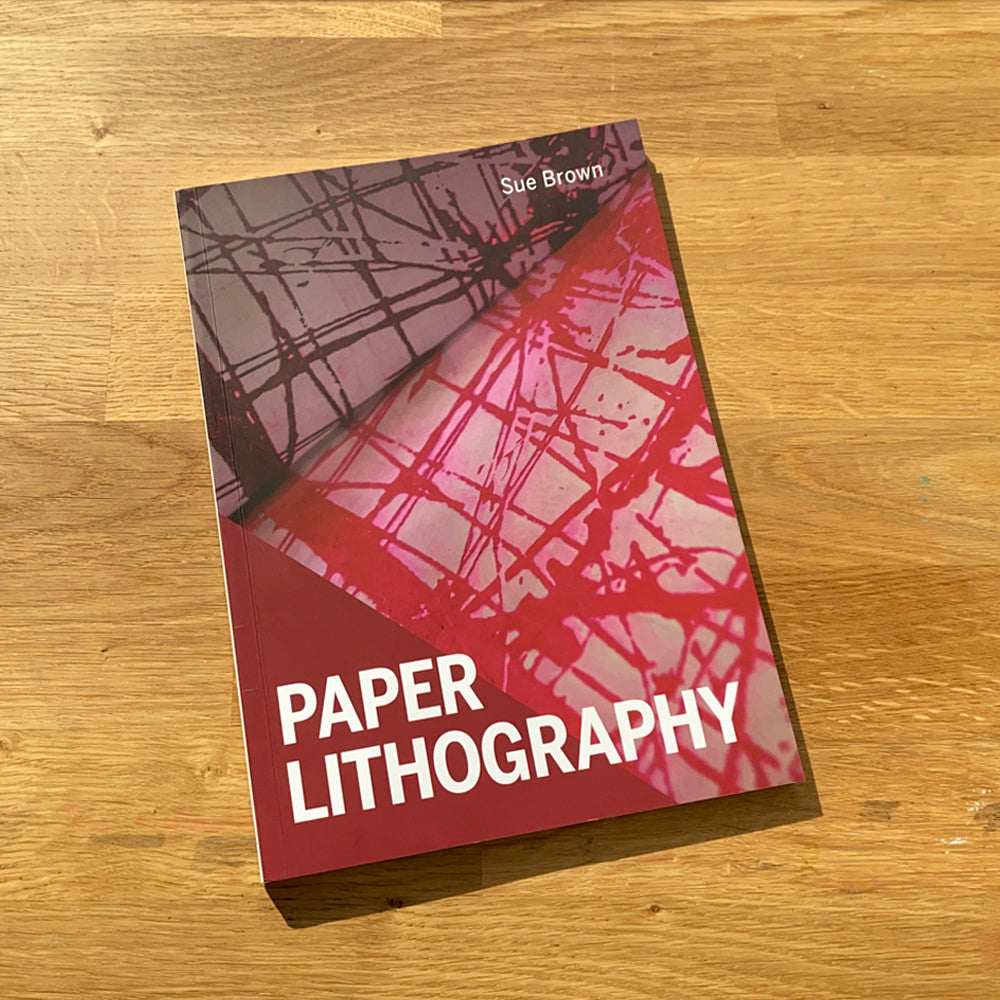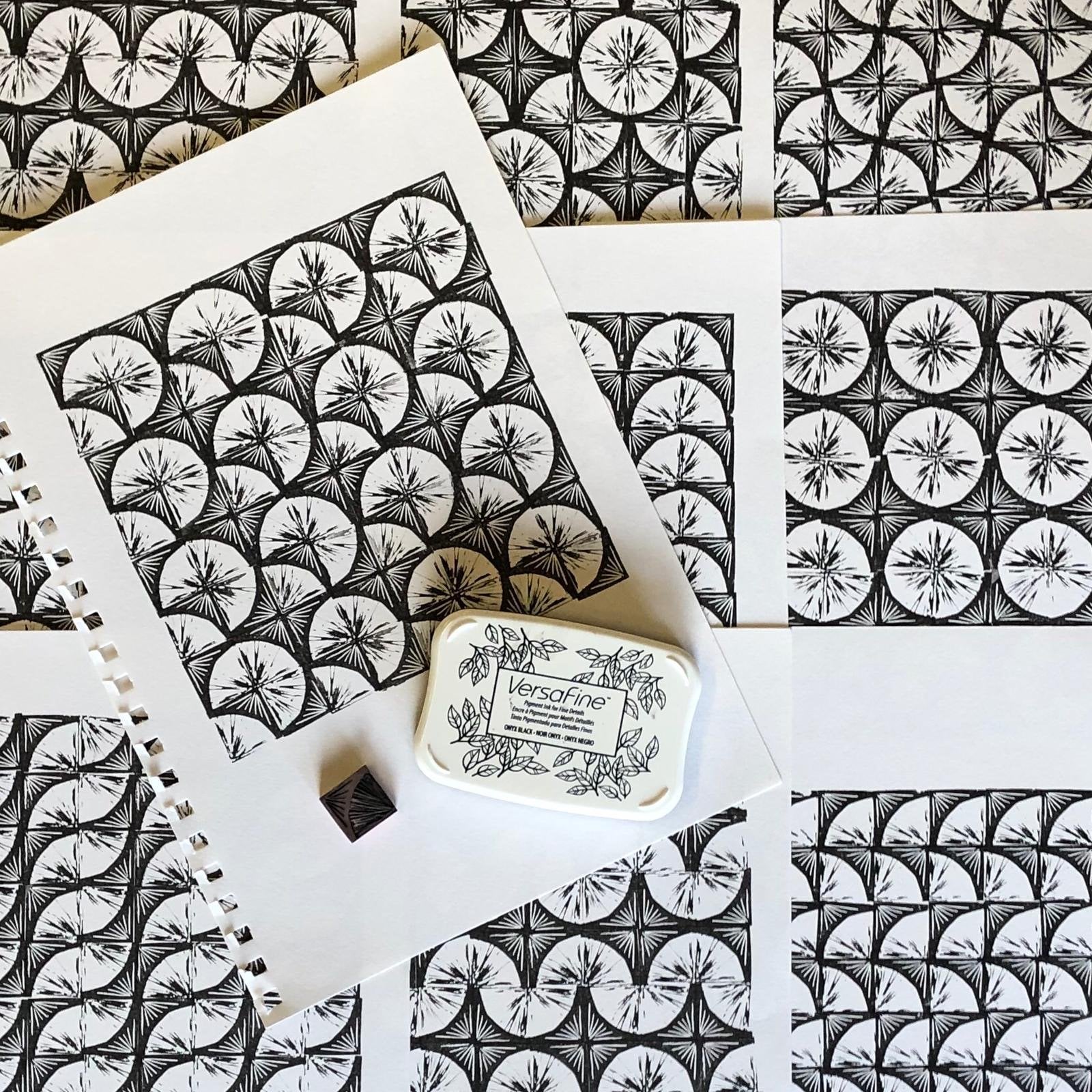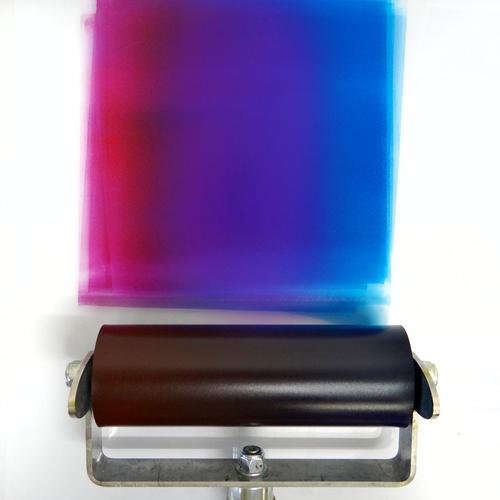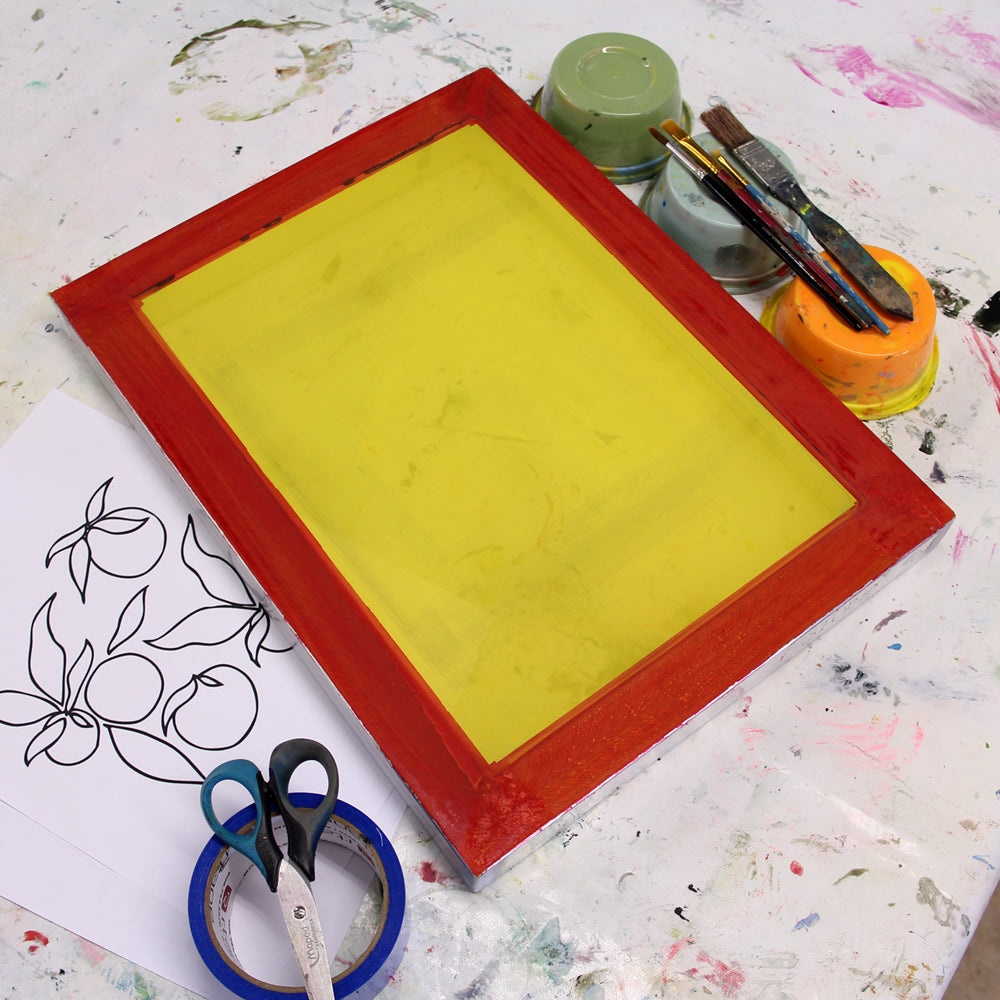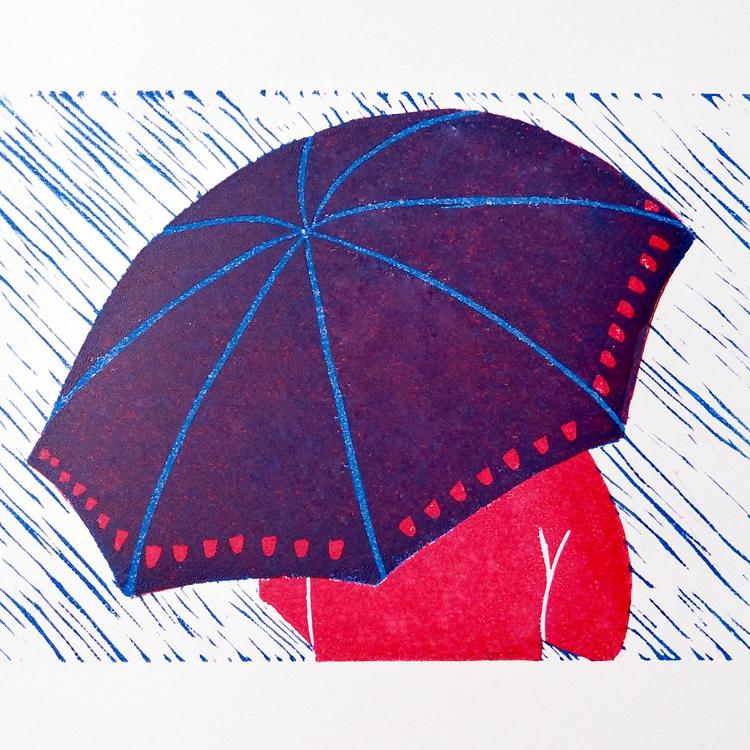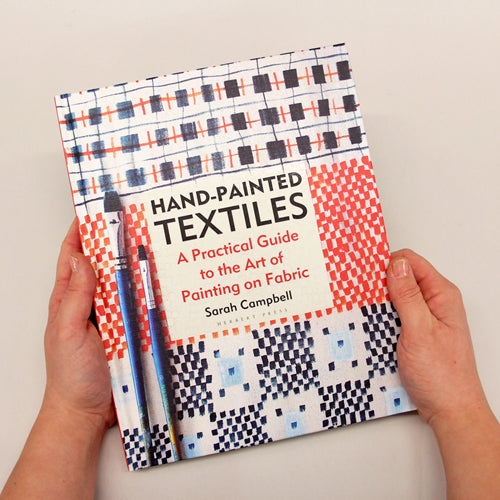Blog - Tutorials
-
Did you know that Cyanotype prints don't always have to be blue? They can be toned and even bleached to alter their colour. The key is to use anything with a high tannin content. Tannins are commonly found in the bark of trees, leaves, buds, stems, fruits, seeds, roots, an. . .
-
Blind embossing is a beautiful way in which to add light and shadow to your prints. Embossing adds subtle texture and interest. Emboss prints ‘blind’ (without ink) or combine with inked lino for a complex final print. Prepare the design. These white pencils are brilliant for drawing designs onto traditional lino. The marks show up … Continue reading "Blind Embossing with Lino"
-
Using tools on your plate isn’t the only way you can create marks within an etching. You can also use resists to stop the mordant from reaching the surface of your plate. Resists can help achieve more subtle marks and washes, and they...
-
We’ve had a lot of fun this week working on easy, quick and fun ways to print your own Christmas cards! We’ve come up with six simple ways for you to try. Take a look at our instructions below and have a go yourself. Bah Humbug Lino Printed Card This two-layered lino card is quick, …
-
When you’ve mixed a fresh batch of copper sulphate mordant, or if you have an old batch that you haven’t used for a few months, it’s good practice to test the strength of your solution. By creating some test strips for both line and tones, you’ll create yourself a reference point that you can use to help plan. . .
-
As Halloween fast approaches, it’s time to get those costumes ready. We think it’s a perfect opportunity to try out Speedball Night Glo Fabric Screen Printing Ink! Print glow in the dark Halloween messages, pictures, or even your kids’ spooky drawings onto their own costume...
-
Using Pigment Colours and binder you can mix your own bespoke colours for screen printing and block printing. Experimenting with different amounts of binder to pigment can create some lovely...
-
When you’ve degreased and prepared your plate for etching, there are a variety of tools you can use to mark into the surface. Any marks made into the surface of the grounds will expose your plate to the mordant. When etched, these marks will...
-
Collagraphy is a really versatile printing process in which a textured plate is inked up and put through a press. Different textures hold varying amounts of ink and print different tones. Anything with a low relief texture can be stuck down and used: wallpaper, leaves, fabrics, tapes and threads etc. The collagraph plate is …
-
For a successful etch, there is a little bit of care and attention you need to give to your metal plate first. There are surface impurities and grease pockets within the metal that will need to be removed before coating your p. . .
-
When mixing shades of ink, we have the choice to dilute the colour with either Opaque White ink or Extender. Both of these give us different results so which should we choose? We have performed a few experiments to show the difference between mixing with Opaque White and Extender. We have used Cranfield Caligo Safe …
-
Copper sulphate is a non-toxic mordant used to etch aluminium, zinc and steel plates for intaglio printmaking. Copper sulphate is a safer alternative to acids - and we always opt for safer solutions here at the Handprinted studio! Metal plates are traditionally etched using highly corrosive acids, which generate noxious gases and can cause burns if they touch your skin. Aci. . .
-
I (Bridget) was lucky enough to take part on last years Life-Drawing Monoscreen Printing workshop with Tricia Johnson. During the course, we worked with a life model to create painterly screen prints using the mono screen method. We used acrylic based screen printing inks and painted dire. . .
-
We have recently discovered that you can expose a screen with artwork made by transferring a linocut to inkjet film using a water based ink. Often when we want to convert our relief prints to screen prints we need to use some kind of digital programming to make this possible. With this technique there are no computers involved. . .
-
Our good friend Sue Brown has recently released her new book Paper Lithography! In this step-by-step guide Sue takes us through the process of making paper lithography prints using the humble photocopy as your plate. . .
-
Using a simple square block can create a myriad of possibilities of pattern. We have used Speedy Carve and Versafine inks for this project. Cut a square from the Speedy Carve using a scalpel. Draw a quarter circle curve on the block using a pencil. Above the curve draw some simple lines fanning from the …
-
These are oil based inks that work beautifully for relief printing. We have a fantastic range of colours including the process range. Process colours are inks specially formulated to create a full spectrum of colours when mixed. There is a Process Yellow, Process Cyan (Blue) and …
-
Mono screen printing is a great technique if you want to create beautiful painterly prints but achieve the flatness of a screen print. It allows you to incorporate multiple colours in one layer and play with brush strokes and. . .
-
A multi-block linocut uses more than one piece of lino to create a layered image. Usually, each block is inked with a separate colour. Where the colours overlap, another colour can be achieved. Multi-block linocuts allow you to partially print an edition and create complete test prints as you can go back to each block…
-
We have recently added some fantastic new books to the Handprinted shop and this one is no exception. Sarah Campbell's beautifully curated and inspirational book explores the art of painting and making patterns on fabric. Even just flicking through the pages. . .

